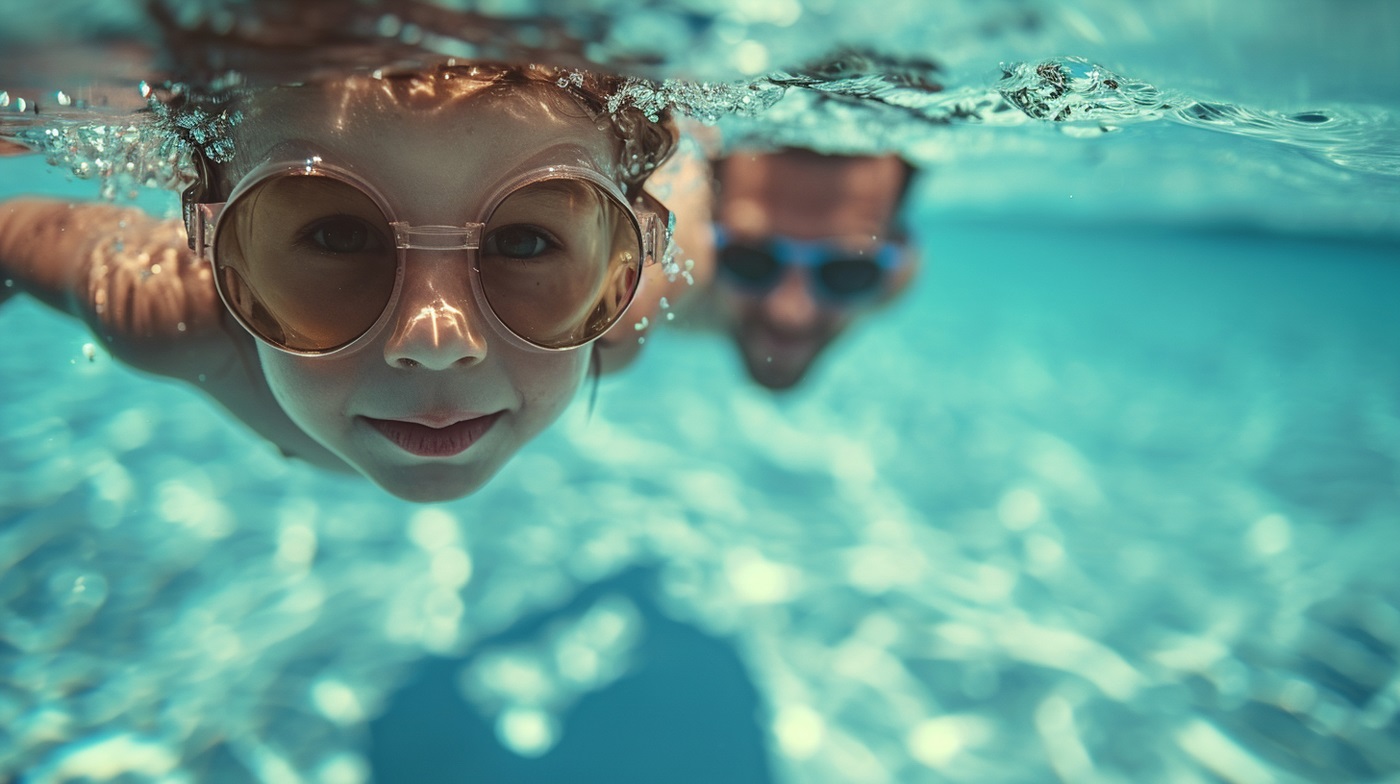
The Science of Swimming: How Does Our Body Move in the Water?
Swimming is one of the most fascinating forms of physical activity, engaging nearly every muscle in the body while moving through an environment very different from land. Unlike walking or running, where we rely on friction against the ground, swimming requires us to push against water—a substance that is 800 times denser than air. The way our bodies adapt to this environment is a perfect combination of physics, biomechanics, and human physiology.
So, how does our body move in the water? Let’s dive into the science of swimming!
The Physics of Swimming: Understanding Buoyancy and Resistance
To understand swimming, we need to look at two main physical forces at play: buoyancy and resistance (also known as drag).
1. Buoyancy: Why We Float
Buoyancy is the upward force that water exerts on objects submerged in it. This force is what keeps us from sinking and allows us to stay afloat. When a swimmer enters the water, their body displaces an amount of water equal to their own weight. If this displaced water creates an upward force greater than the swimmer’s weight, they will float. This is why body position and lung capacity play a significant role in swimming efficiency—filling your lungs with air increases buoyancy, making it easier to stay on the surface.
2. Resistance: Overcoming Drag
Water creates drag, a force that opposes motion. There are three types of drag that swimmers must contend with:
- Frictional Drag – Water molecules create resistance along the skin and swimsuit.
- Form Drag – The shape of the body affects how smoothly it moves through the water. A streamlined body shape reduces resistance.
- Wave Drag – Movement at the surface generates waves that push against the swimmer’s body, slowing them down.
To minimize drag, competitive swimmers adopt a streamlined posture, tuck their heads, and wear sleek swimsuits designed to reduce water resistance.
The Role of Human Anatomy in Swimming
Each stroke in swimming—freestyle, backstroke, breaststroke, and butterfly—engages different muscle groups, requiring coordinated movement of the arms, legs, and core.
1. Upper Body Movement: Generating Propulsion
The arms play a critical role in moving through the water. Swimmers use a technique called the pull-and-recovery cycle, where they pull water backward to generate forward momentum. The latissimus dorsi (back muscles), deltoids, and pectorals are heavily engaged during this process.
- Freestyle & Backstroke: Swimmers use an alternating arm movement, creating a continuous propulsion force.
- Breaststroke & Butterfly: Both arms move simultaneously in a sweeping motion to push water backward.
2. Lower Body Movement: The Power of Kicking
Legs provide additional propulsion and stability. The primary muscles involved in kicking include quadriceps, hamstrings, glutes, and calves. Different strokes use different kick styles:
- Flutter Kick (Freestyle & Backstroke): Rapid up-and-down leg motion, keeping the legs straight but relaxed.
- Frog Kick (Breaststroke): Legs move in a circular motion, generating force from the thighs.
- Dolphin Kick (Butterfly): A powerful, undulating movement driven by the core and hips.
Swimmers with a strong kick can maintain speed with less effort, helping them conserve energy over long distances.
The Role of Breathing and Oxygen Efficiency
Unlike land-based sports, swimming requires controlled breathing since the face is submerged in water. This makes breath control a key component of swimming efficiency.
- Bilateral Breathing (Freestyle & Backstroke): Swimmers take breaths on alternating sides to maintain balance and rhythm.
- Explosive Breathing (Butterfly & Breaststroke): Since both strokes require both arms to move together, swimmers take quick breaths at the peak of the stroke.
Controlled breathing improves lung capacity and oxygen efficiency, reducing the risk of muscle fatigue and cramps.
Neuromuscular Coordination: The Key to Efficient Swimming
Swimming is a neuromuscular activity, meaning it requires communication between the brain, nerves, and muscles. Elite swimmers train their bodies to execute precise movements with minimal energy expenditure.
- Motor Learning: Swimmers develop muscle memory through repetitive drills, refining their stroke technique.
- Proprioception: This is the body’s ability to sense movement and position in space. Swimmers rely on proprioception to make small adjustments in balance and posture while in water.
- Reaction Time: Swimmers must have quick reflexes for starts and turns, ensuring they maximize every moment in a race.
The more efficiently a swimmer coordinates these systems, the faster and smoother they move through the water.
How to Improve Your Swimming Technique
Now that we’ve explored the science behind swimming, how can you apply this knowledge to improve your technique?
1. Perfect Your Streamline Position
A streamlined body shape reduces drag. Keep your head in a neutral position, stretch your arms forward, and engage your core to stay aligned.
2. Strengthen Core and Upper Body Muscles
A strong core helps maintain stability in the water. Incorporate exercises like planks, pull-ups, and resistance band training to build swimming-specific strength.
3. Improve Your Breathing Efficiency
Practice exhaling underwater and taking quick, deep breaths to maintain oxygen flow without breaking stroke rhythm.
4. Work on Kicking Techniques
Powerful kicks increase propulsion. Use kickboards to isolate leg movement and focus on improving your flutter, frog, or dolphin kick.
5. Train With a Professional Swim Coach
Personalized coaching can refine your technique and correct inefficiencies. Coaches can provide real-time feedback to help you swim faster and with less effort.
Ready to Dive In? Start Your Swimming Journey Today!
Swimming is more than just a sport or a recreational activity—it’s a full-body workout that blends physics, biomechanics, and endurance. Understanding how the body moves in water can help swimmers refine their technique, improve efficiency, and enjoy a more rewarding experience in the pool.
If you’re looking to enhance your swimming skills or want to introduce your child to the water, Into the Swim offers expert-led lessons designed for all ages and skill levels. Whether you’re a beginner or training for competition, our swim programs will help you master the water with confidence.
Sign up for swim lessons today at Into the Swim!



